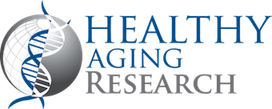
Healthy Aging Research
Open Access
ISSN: 2261-7434

ISSN: 2261-7434
Commentary - (2023)Volume 12, Issue 2
Aging is an inevitable and complex process that affects all living organisms. Scientists and researchers have conducted several studies on aging in order to improve health and increase lifespan. One promising avenue of study is the identification and characterization of biomarkers of aging. Biomarkers are measurable indicators that provide insights into biological processes occurring within an organism. In the context of aging, biomarkers help us understand the physiological changes associated with aging, identify potential interventions, and assess the effectiveness of anti-aging treatments.
Understanding biomarkers of aging
Biomarkers of aging can be categorized into three main types: molecular, cellular, and organismal. Molecular biomarkers include various molecules, such as DNA, RNA, proteins, metabolites, and epigenetic modifications, which exhibit ageassociated changes. Cellular biomarkers focus on alterations in cellular functions, including telomere length, cellular senescence, mitochondrial dysfunction, and oxidative stress. Organismal biomarkers encompass physiological and functional changes occurring at the organismal level, such as physical performance, immune function, and cognitive decline.
One widely studied molecular biomarker is the telomere, a protective cap at the ends of chromosomes that shortens with each cell division. Telomere length has been linked to aging and age-related diseases, and its measurement provides insights into cellular aging. Other molecular biomarkers include epigenetic modifications, such as DNA methylation patterns, which change with age and may influence gene expression. Proteins like p16INK4a and mTOR (mechanistic target of rapamycin) are also implicated in aging processes and are being investigated as potential biomarkers.
Cellular biomarkers like cellular senescence, a state in which cells lose their ability to divide, contribute to aging and age-related diseases. Senescent cells secrete inflammatory molecules, disrupting tissue homeostasis. By measuring the accumulation of senescent cells or specific senescence-associated markers, scientists can assess the extent of cellular senescence and its impact on aging.
Prominent biomarkers of aging
Several prominent biomarkers of aging have emerged from extensive research. Among them, the epigenetic clock has gained significant attention. Epigenetic clocks use DNA methylation patterns to estimate an individual's biological age, which may differ from their chronological age. These clocks provide a more accurate measure of the aging process and can be used to predict age-related diseases and mortality risk.
Another important biomarker is inflammaging, which refers to chronic, low-grade inflammation associated with aging.
Inflammation plays a critical role in age-related diseases such as cardiovascular disease, diabetes, and neurodegenerative disorders. Measuring inflammatory markers, such as C - Reactive Protein (CRP) and interleukin-6 (IL-6), can help assess the degree of inflammaging and its impact on health.
Metabolomic profiles, which encompass a broad range of small molecules involved in metabolism, have also been explored as biomarkers of aging. Changes in metabolite levels and metabolic pathways have been associated with age-related conditions. By analysing the metabolome, researchers can gain insights into agerelated metabolic alterations and potentially identify therapeutic targets.
Mitochondrial function is closely linked to aging. As the primary producers of cellular energy, mitochondria are susceptible to damage and dysfunction over time. Biomarkers such as Mitochondrial DNA (mtDNA) mutations, mitochondrial respiratory capacity, and Reactive Oxygen Species (ROS) production provide insights into mitochondrial health and its role in aging.
Citation: Gagesch M (2023) Biomarkers of Aging: The Complexities of Aging Process. Healthy Aging Res.12:162
Received: 23-May-2023, Manuscript No. HAR-23-24518; Editor assigned: 26-May-2023, Pre QC No. HAR-23-24518 (PQ); Reviewed: 12-Jun-2023, QC No. HAR-23-24518; Revised: 19-Jun-2023, Manuscript No. HAR-23-24518 (R); Published: 26-Jun-2023 , DOI: 10.35248/2261-7434.23.12.162
Copyright: © 2023 Gagesch M. This is an open-access article distributed under the terms of the Creative Commons Attribution License, which permits unrestricted use, distribution, and reproduction in any medium, provided the original author and source are credited.